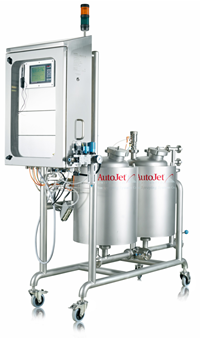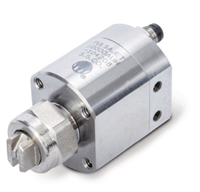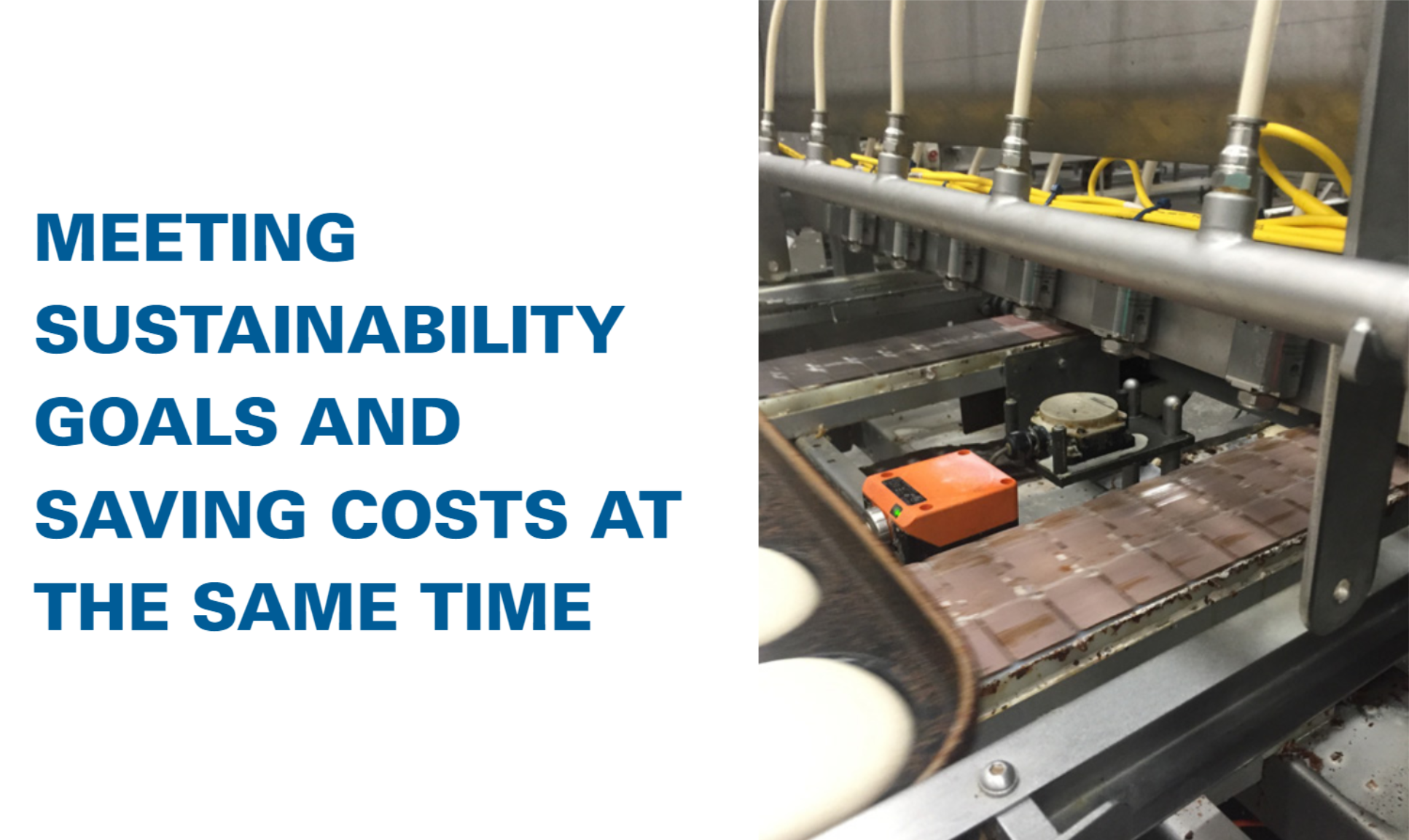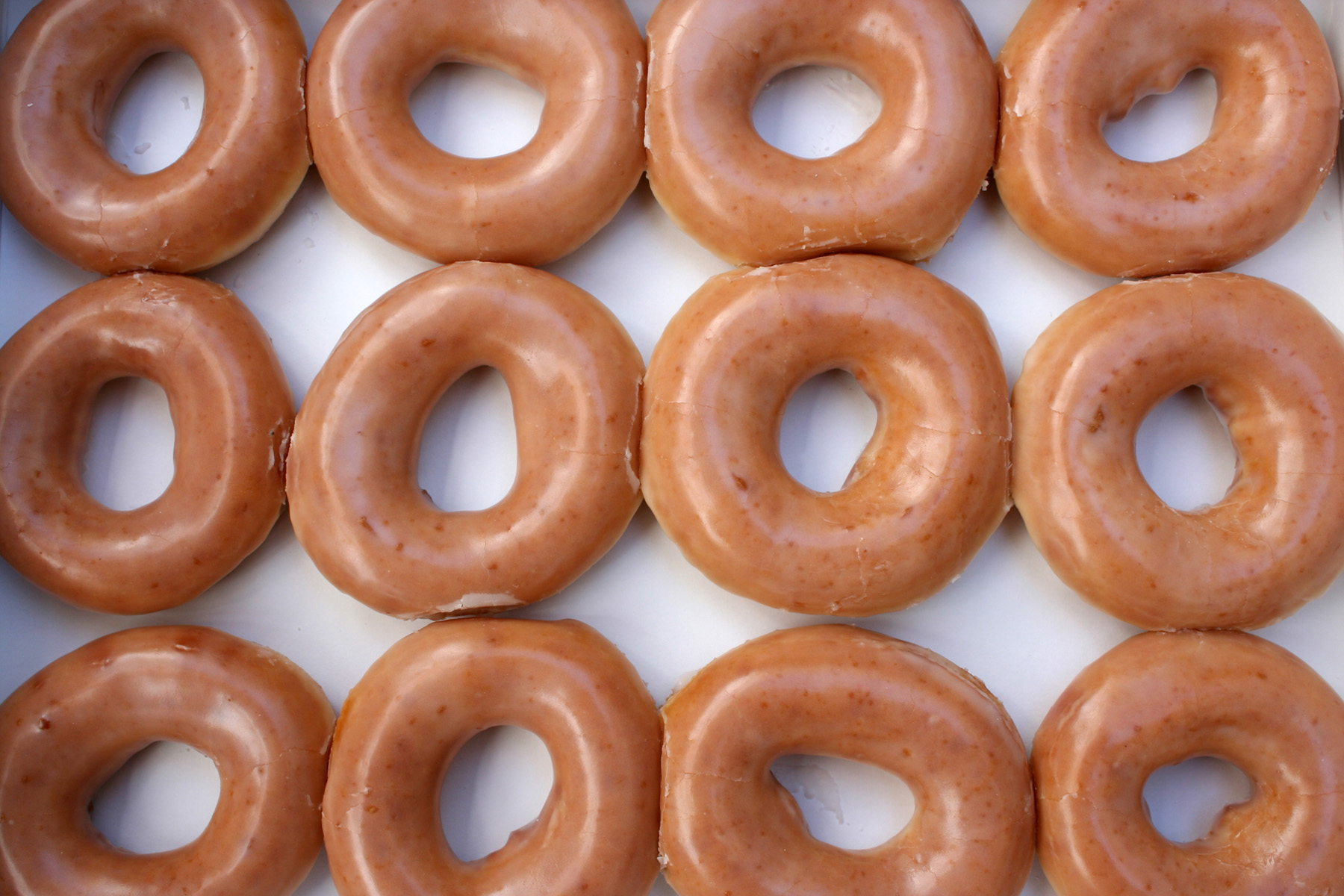Many bakeries around the world use a well-known proprietary glaze as a substitute for egg wash on high-volume products such as buns. It is typically applied by spray nozzles positioned over a conveyor. At a UK plant operated by one of the largest bakery groups in Europe, the glaze was applied continuously through a single VeeJet flat spray hydraulic nozzle.
Spraying outwards at a 90° angle over the bun-laden trays as they were carried along, there was substantial overspray, covering nearby surfaces to the extent that catch trays were needed. Every hour throughout each workshift a dedicated cleaning team had to clean down the whole spraying area.
The process was evidently wasteful, and expensive in terms of both materials and labour. In 2016 the bakery determined that reduction in ongoing operational costs must be a priority so they started looking for a new glazing system.
Bakery glazing system

The bakery’s aims were simple: reduce the amount of glaze sprayed and improve the cleanliness of the area. The modular solution put forward by Spraying Systems promised both.
The proposal was for an AutoJet® PHM AccuGlaze Egg Wash Coating System with 2250+ PLC controller in which the glaze is fed from two 50 litre tanks, with automatic refill, to a 6-nozzle PulsaJet® spray header. The system uses an encoder and only sprays when the buns are under the nozzles. All system elements, including, externals such as conveyor speed, are continuously monitored. If speed changes, liquid flow rate is automatically adjusted accordingly.

The PulsaJet® nozzles themselves are unique to Spraying Systems. Flow rate, spray angle and droplet size are independent of line pressure. Flow is changed by repeatedly switching the nozzle on/off very fast (up to thousands of cycles per minute). The percentage of ‘On’ time (variable from zero to 100%) determines the volume of liquid sprayed per unit of time. The downturn of a single PulsaJet® nozzle or header is fully flexible, and nozzles need not be selected only on flow rate.
To validate spray performance and expectation of reductions in glaze consumption, the customer opted for an on-site trial before placing an order. Six weeks later two systems were purchased and installed.

Result
The customer had used the proprietary glaze at a rate of more than 40 litres/hour. With the AutoJet® system glaze consumption has been reduced to less than 8 litres/hour. There is now no need to clean during the shift. All the glaze is applied to the buns, with very little overspray. In less than 3 months the bakery achieved full payback on the two systems purchased. There are related benefits. The glaze is held in refrigeration prior to using it.
The volume held is now reduced which means the energy costs of refrigeration are also reduced. Hourly cleaning was heavy on water usage. Cleaning just once, at the shift end, saves water. The customer also noted a health and safety improvement. With the previous system, oversprayed glaze falling around the spraying area was a potentially dangerouse slip hazard, now removed.


